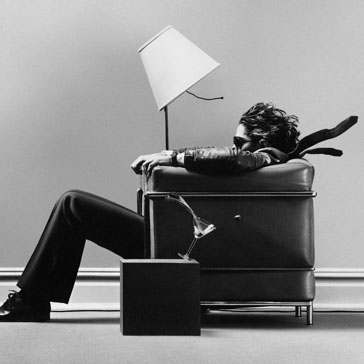I have a Yaesu FT-70D, and I have had it for almost exactly one year now. My review is this: it’s OK. It’s not great, but it was also pretty affordable, as far as VHF/UHF HTs that aren’t just junk go. (It normally runs about $175, but seems to go on sale pretty frequently for quite a bit less.)
First off, a disclaimer: I really only use VHF/UHF when I travel and for events. I’m not a big FM rag chewer. An HT is a tool for me, not something particularly exciting. I have a mobile radio mounted in my vehicle, and I have at times (I do not currently) had a mobile set up as a base station in my home for either voice or digital traffic, or both.
As far as positive features, the FT-70DR is a very comfortable size, has a very serviceable loudspeaker, and the transmitted audio quality is reportedly good. It does have Yaesu System Fusion (although I’ve been able to exercise this very little due to lack of convenient local support). While there are many online complaints about battery life, I have found it quite satisfactory; I don’t work it too hard, either, though. Fitments (such as the belt clip, battery pack, etc.) all seem quality and durable, and while I haven’t put its IP rating (IP54; dust protected, tolerant of water splashes) to the test, it’s clearly a tight enclosure.
My list of gripes is longer.
The antenna that came with it was fairly deaf; I tried a cross-town chat with a friend of mine who had an HT on a rooftop antenna, and we really struggled. After tuning around a bit and comparing signal strengths, it appeared that my reception was quite poor. I purchased a simple dual band whip from MFJ (I think it was under $30, maybe under $20?), and my reception improved noticeably. It is, of course, longer and more stabby than the Yaesu rubber duck.
It has no dedicated memories for the weather bands, which surprised me, because at least some of the Yaesu mobile radios that share its design language have this feature. This feels very unfortunate, because while the local weather stations can be entered into memories easily (it has something like 1,000 memories, you’re unlikely to run out), they’ll stop scans if they’re included in a scan; the mobile radios have a feature where they only stop on weather stations if they’re playing an alert tone, and they scan them frequently enough to catch one if it’s there.
Speaking of memories, dealing with the memories sucks. You absolutely need the manual to do many things with this radio, unless you just use it all the time. I’m a “set it up once and don’t look at it again until I have to” user for VHF/UHF, so when I travel (for example) I have to make sure I have the manual PDF with me, because otherwise there’s no way I’ll get local stations plugged into it.
Speaking of plugging memories in, I never was able to get it to communicate reliably with computer control software, despite the fact that it has a USB port right there on the side and comes with a USB cable. You have to do some ridiculous dance where you power it off, then remove the battery, then plug it into power while holding the power button, or something like that, to get it to go into programming mode. It’s bonkers, and it’s also unreliable. I’d blame it on user error, except the Internet is basically filled with people having the exact same problem, and then some reply guy coming in and saying it’s never been a problem for him, he just has someone lend him a third hand while holding it upside down after taking it directly out of the freezer and then it works fine.
In general there’s clearly never been a UX person near this radio. Changing the volume requires holding a button and turning a knob at the same time. There are rubber flaps on both sides of the radio, both of which can be picked out rather easily with a fingernail, and one of them is the control buttons but the other one is the charging, USB, and headphone ports. To top it off, the bottom symbol on both sides is related to power. Guess which one I’ve picked off by mistake more than once to plug in power? Guess which one is a LOT harder to get back in than it is to get out? The menus are impenetrable, and every button has three functions (push, hold, function+button) or more.
The model number of the charger that it comes with is SAD-25, because it’s really sad, and it takes 25 years to charge the battery. However, if you pay $50 to Yaesu for a drop-in charger adapter, the exact same charger will charge the battery in much less time. Now, this might not completely be rent-seeking, because the cradle has a three terminal interface while the trickle charger has only two, and the smarts for rapid charging the Lithium battery might be in the cradle, but … why?
Then there are the gripes I have about almost all ham radio equipment: why won’t it accept a standard headset? Why doesn’t it have support for a BLE headset, for that matter? Why doesn’t it charge off a standard USB port? Why can’t it charge and operate simultaneously? Using a ham HT usually feels like stepping back a decade. I do appreciate that radios like this are built to a different spec; I don’t want it to have a color touch screen, or a glass back. I do, however, wish it respected the past two decades of electronic progress. I honestly feel like the Standard C-158A that I have from the mid-'90s with a Lithium battery pack would be a more ergonomic and easy-to-use radio!
In short, would I buy it again? I don’t think so. I think I would buy a radio without System Fusion and with a simpler interface (these things aren’t always guaranteed to go hand-in-hand), probably for a bit less money, if I were choosing a second time. Perhaps a FT-60R or FT-65R, or a competing radio from Alinco, Icom, or similar. I think I could save $30-50 and get a radio I’m at least as pleased to own, if not more so. Maybe things would be different if System Fusion had more buy-in in my area, or if I were more of a VHF/UHF guy.
Thanks for the review. I am in the market for a handheld having just got my tech. license (almost got anyways, since the FCC website is still down). I found your complaints about almost all ham radio equipment very useful. I was looking for long battery life and common modern conveniences like USB charging and was surprised at what I was finding. Your comments suggest I need to be approaching this acquisition differently than I do other electronics products. (I just tried to post something similar to this but I did something and it vanished. Apologies if this is a double-post.)
Great review, @elb. But “brief”? Maybe to us academics… :D
Well … I tried. I found out I had more to say than I thought. ;-)
I got one solely because there is an active fusion repeater in my area and the battery life is really bad. It’s so bad I might sell it. It’s a shame because I really like my FT-60 and I use it all the time
I see a lot of people complaining bitterly about battery life, but mine seems to do OK. I wonder if it’s a firmware issue or something. (In particular, I’ve seen complaints that it drains its battery significantly when powered off, which mine absolutely does not do.)
Helpful, thanks for writing this. I have an FT-65R and I feel similarly. It’s a solid piece of gear, but could have had a lot more user design work applied to it at this price. I don’t know what it is about amateur radio, but it seems extremely conservative in terms of resistance to modern features and practices for a technical hobby. Not universally, a lot of SDR gear feels modern, but in many areas of the hobby things feel almost steampunk. The concepts are familiar and the hardware is capable, but the manner of implementation is of another era.
deleted by creator
I have never owned a Baofeng (and probably never will; I do not like that they frequently have very poor spurious radiation characteristics, and people act like that’s not a problem!). My first mobile radios were Kenwood and Icom, my first HT was a Standard (before it was acquired by Vertex and then Yaesu), the mobile in my vehicle right now is Yaesu (FT-7800), and my packet station (when last set up) was an Icom. I’m not particularly tied to any one brand, as you can see. :-) (Most of my HF equipment is tube type, so it doesn’t enter into this equation!)
I rather like the FT-7800; I think it’s much easier to use and has a much better UX than the FT-70. That said, in 2023 I would expect more; it’s been in my vehicle for probably 15 years, now. I don’t know if the replacements (I don’t actually think the FT-7900 is that much newer?) address some of its meaningful shortcomings like lack of reasonable USB programming support (for real people, why do these radios not simply expose a well-documented HID or serial interface?), but as far as day-to-day usage, the 7800 is quite fine. The 70 … is less so. As I said, if you don’t actually have to change anything, it’s not bad, but if you have to change things it gets hairy fast.




